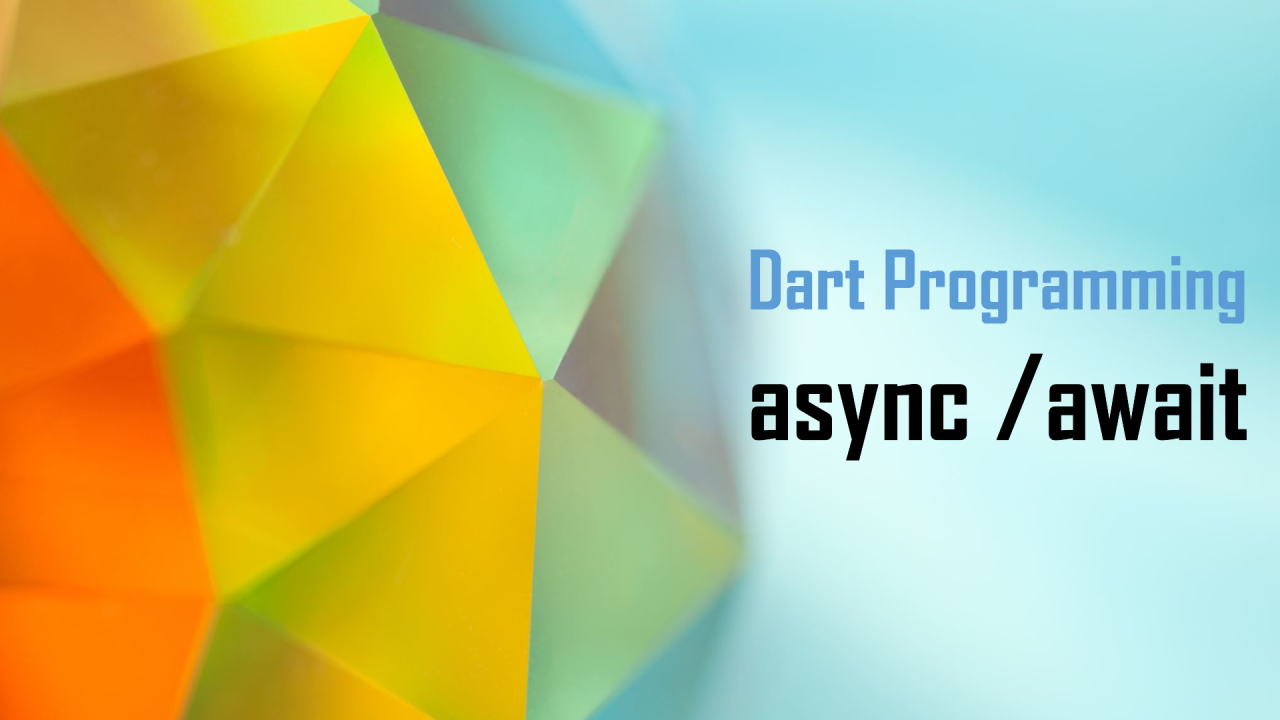
Power of Asynchronous Programming in Flutter
mahesh dabhi
Flutter Developer | 5+ years' experience | 20+ apps | Cross-platform development | App development expert
As a Flutter developer, handling tasks like fetching data from the internet, reading files, or performing background computations is common. These operations can be slow, and if not managed correctly, they can freeze the app and ruin the user experience. This is where Dart's async and await keywords come to the rescue.
In this article, we will break down what async and await are, how to use them effectively, and some key tips to make your code more efficient. We'll also explore how Future.wait can help run multiple asynchronous tasks concurrently.
What is async and await?
In simple terms:
Why is Asynchronous Programming Important?
Imagine you have a function that needs to fetch data from an API. Without asynchronous programming, the entire app would freeze until that data is fetched. Asynchronous programming ensures that the app remains responsive while waiting for the operation to complete.
Use Case: Fetching Data from an API
Let’s say you’re building a Flutter app, and you need to load user data from a remote server. Here’s how you would handle that using async and await:
Future<void> fetchUserData() async {
print('Fetching user data...');
// Simulating a network request with a 2-second delay
await Future.delayed(Duration(seconds: 2)); // The app won’t freeze
print('User data fetched!');
}
The function fetchUserData uses async to indicate that it will perform an asynchronous operation. The await keyword tells Dart to pause the function execution until the data is fetched, but the app remains responsive during that time.
Benefits of Using async and await
Running Multiple Asynchronous Tasks: Future.wait
Sometimes, you need to run several asynchronous tasks at the same time. Instead of waiting for each one to complete before starting the next, you can run them concurrently using Future.wait. This is useful when tasks are independent of each other.
Example: Fetching Multiple Resources Simultaneously
Imagine you need to load user data, product list, and notifications at the same time. Here's how you can do that:
Future<void> loadData() async {
await Future.wait([
fetchUserData(),
fetchProductList(),
fetchNotifications(),
]);
print('All data fetched!');
}
With Future.wait, all the tasks will run concurrently, reducing overall wait time and improving app performance.
Best Tips for Using async and await in Flutter
try {
var result = await fetchData();
print(result);
} catch (e) {
print('Error: $e');
}
void saveData() {
uploadToServer(); // No need to wait for this
print('Data is being uploaded...');
}
Memory updated
Unlock the Power of Asynchronous Programming in Flutter: Understanding async and await
As a Flutter developer, handling tasks like fetching data from the internet, reading files, or performing background computations is common. These operations can be slow, and if not managed correctly, they can freeze the app and ruin the user experience. This is where Dart's async and await keywords come to the rescue.
In this article, we will break down what async and await are, how to use them effectively, and some key tips to make your code more efficient. We'll also explore how Future.wait can help run multiple asynchronous tasks concurrently.
领英推荐
What is async and await?
In simple terms:
Why is Asynchronous Programming Important?
Imagine you have a function that needs to fetch data from an API. Without asynchronous programming, the entire app would freeze until that data is fetched. Asynchronous programming ensures that the app remains responsive while waiting for the operation to complete.
Use Case: Fetching Data from an API
Let’s say you’re building a Flutter app, and you need to load user data from a remote server. Here’s how you would handle that using async and await:
dart
Copy code
Future<void> fetchUserData() async { print('Fetching user data...'); // Simulating a network request with a 2-second delay await Future.delayed(Duration(seconds: 2)); // The app won’t freeze print('User data fetched!'); }
The function fetchUserData uses async to indicate that it will perform an asynchronous operation. The await keyword tells Dart to pause the function execution until the data is fetched, but the app remains responsive during that time.
Benefits of Using async and await
Running Multiple Asynchronous Tasks: Future.wait
Sometimes, you need to run several asynchronous tasks at the same time. Instead of waiting for each one to complete before starting the next, you can run them concurrently using Future.wait. This is useful when tasks are independent of each other.
Example: Fetching Multiple Resources Simultaneously
Imagine you need to load user data, product list, and notifications at the same time. Here's how you can do that:
dart
Copy code
Future<void> loadData() async { await Future.wait([ fetchUserData(), fetchProductList(), fetchNotifications(), ]); print('All data fetched!'); }
With Future.wait, all the tasks will run concurrently, reducing overall wait time and improving app performance.
Best Tips for Using async and await in Flutter
Final Thoughts
Asynchronous programming is essential for building fast, responsive, and user-friendly Flutter apps. Dart’s async and await keywords simplify working with asynchronous operations, making your code cleaner and easier to manage.
By using Future.wait, you can also run multiple tasks concurrently, reducing wait times and improving performance. Remember to handle errors gracefully, avoid blocking the main thread, and use await only when necessary to write efficient, maintainable code.
Feel free to share your thoughts or tips in the comments below. Happy coding!